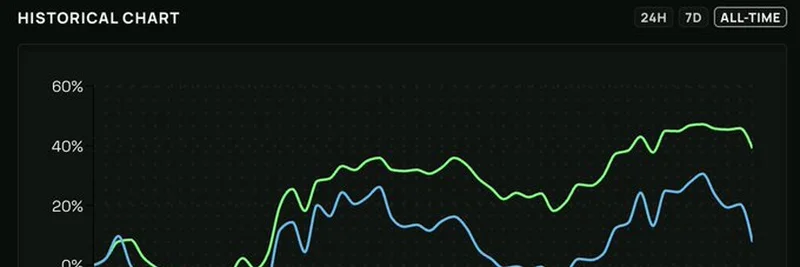HawkFi Automated Liquidity Pools: Orca vs Meteora Performance Analysis
In the ever-evolving world of decentralized finance (DeFi), liquidity provision is a critical component that can significantly impact your earnings. Recently, Bradydon from HawkFi shared an insightful comparison of two popular Solana-based decentralized exchanges (DEXes), Orca and Meteora, using HawkFi's automated liquidity pools. Let's dive into the details and understand what this means for crypto enthusiasts and traders.
The Setup: Automated Liquidity Pools on HawkFi
HawkFi's platform automates the tedious aspects of liquidity provision, ensuring that users can earn yields regardless of market conditions. By leveraging automated tools, HawkFi simplifies the process, making it accessible even for those new to DeFi. In this case, Bradydon set up single-side, tight-range, 1-hour directional (up-only) autorebalances for both Orca and Meteora pools to compare their performance.
Performance Metrics: Orca Leads the Way
The results are impressive, with Orca's $GP liquidity pool outperforming Meteora's by a significant margin:
- Orca $GP LP: +39.1%
- Meteora $GP LP: +13.72%
This performance starkly contrasts with holding strategies:
- HODL Pair: -0.08%
- HODL GP: +7.75%
- HODL USDC: 0.00%
The liquidity providing strategy not only outperformed spot holding by +31.3% but also highlighted the potential of earning from both rising token prices and fee generation.
Why Does This Matter?
For those unfamiliar with DeFi, liquidity pools are essentially pools of tokens locked in a smart contract that facilitate trading on DEXes. By providing liquidity, you earn a portion of the trading fees generated by the pool. However, traditional liquidity provision requires constant monitoring and adjustment of price ranges to remain effective. HawkFi's automation eliminates this hassle, allowing users to focus on other aspects of their investment strategy.
The comparison between Orca and Meteora is particularly relevant because both platforms offer unique features. Orca, known for its user-friendly interface and "Whirlpools" (concentrated liquidity pools), allows for flexible fee tiers and innovative tools like the "Fair Price Indicator" and "Magic Bar." Meteora, on the other hand, focuses on a seamless trading experience with Dynamic Liquidity Market Maker (DLMM) pools and Dynamic Vaults, which optimize yield generation.
Implications for Meme Coin Traders
This analysis is especially pertinent for those involved in meme coin trading, where liquidity can be volatile and unpredictable. Understanding how automated tools like HawkFi can enhance your strategy is crucial. For instance, when you buy into a meme coin at its peak, you're essentially providing liquidity for other holders to sell. HawkFi's automation ensures that your liquidity remains effective, even as market conditions change.
Conclusion
HawkFi's automated liquidity pools demonstrate a powerful use case for DeFi, particularly on the Solana blockchain. The comparison between Orca and Meteora shows that, in this instance, Orca's platform provided a higher yield, but both options offer significant advantages over traditional holding strategies. For meme coin traders and DeFi enthusiasts, leveraging such tools can be a game-changer, enhancing both earnings and efficiency.
Stay tuned to Meme Insider for more insights into the latest trends and technologies in the world of meme tokens and beyond.



